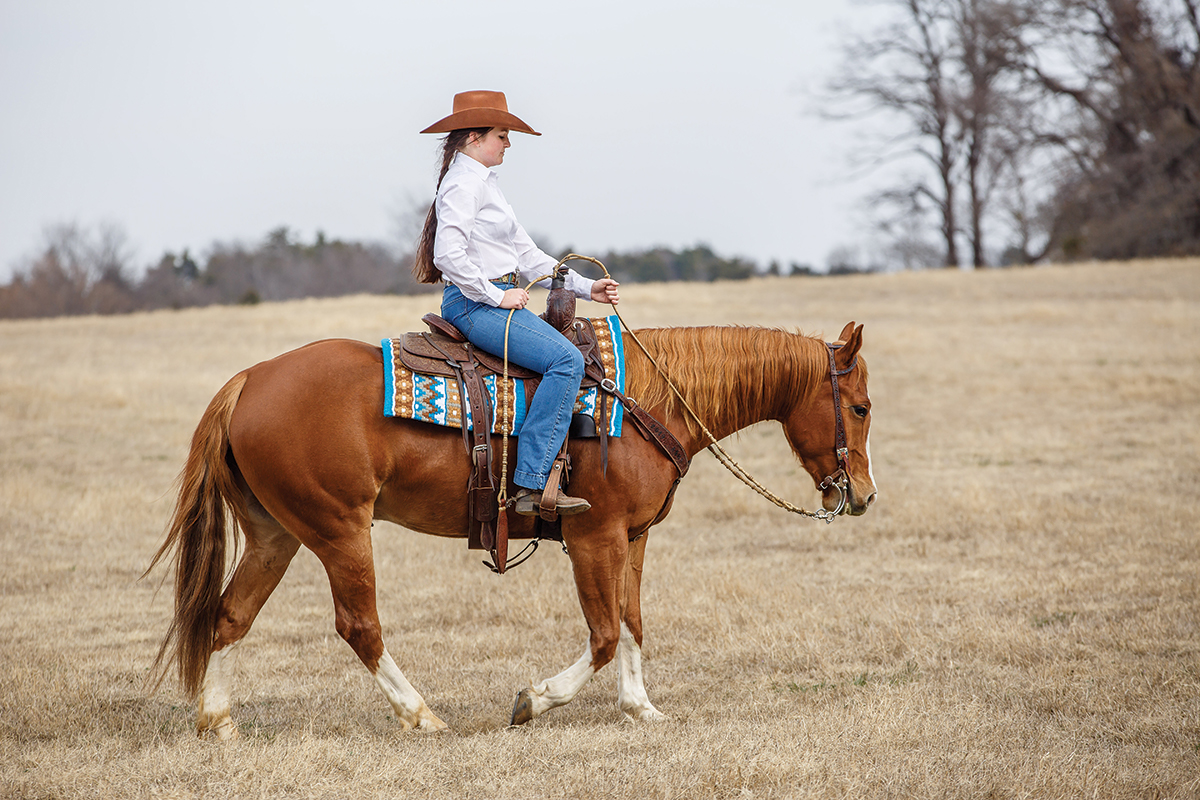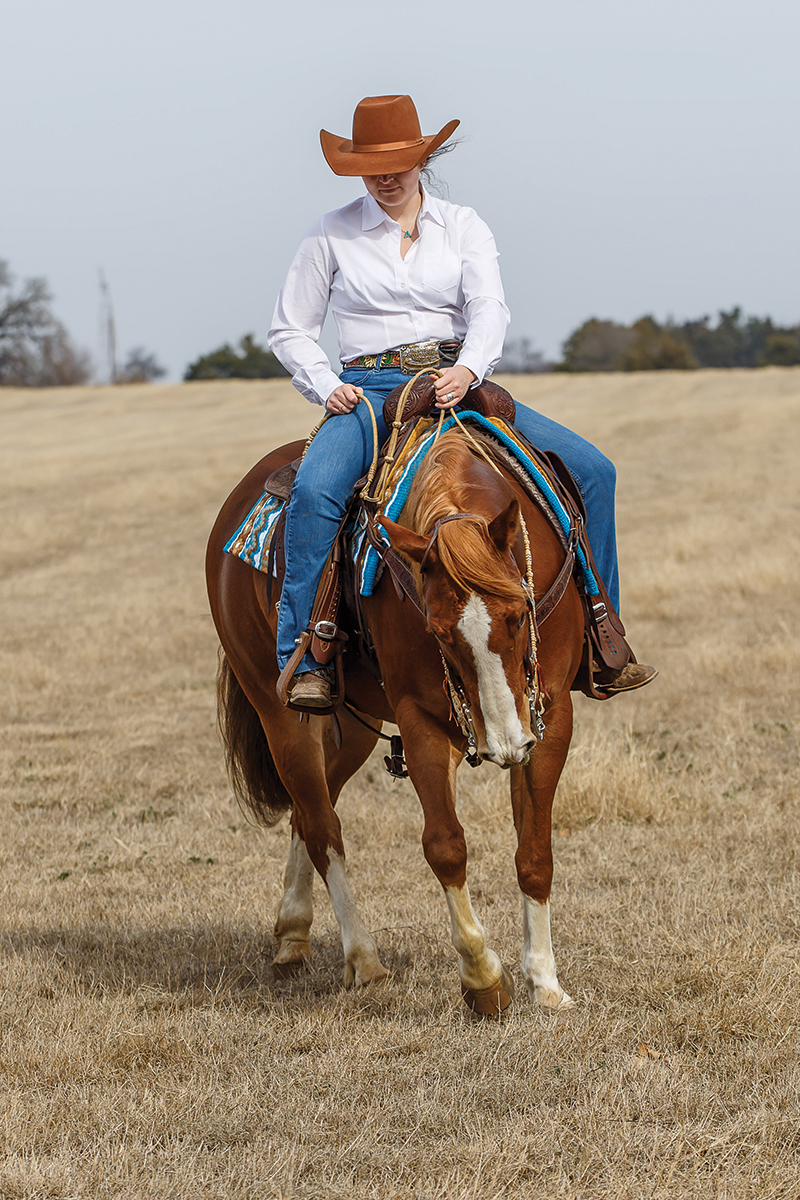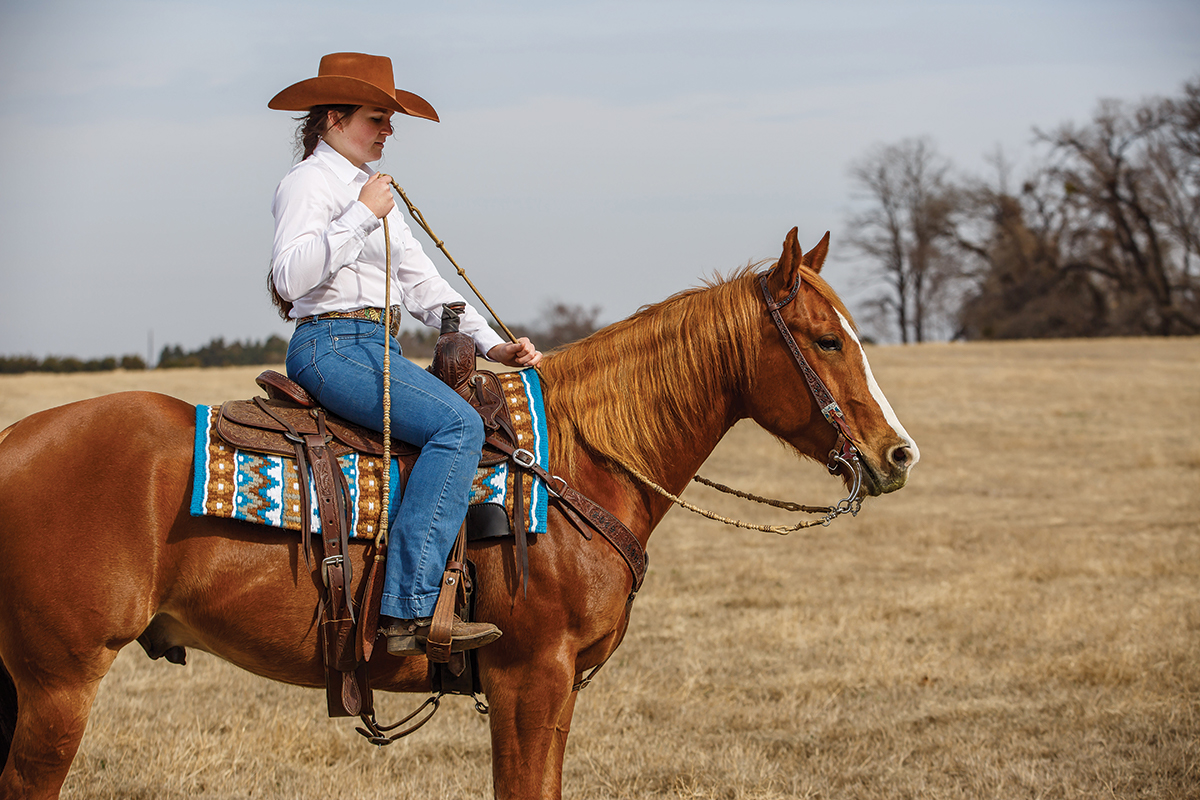
A staple piece of tack for many West Coast western riders, romal reins can be a bit of a mystery if you learned how to ride in the eastern parts of the United States. While this rein started as a reined cow horse mainstay, its use has spread across the country, particularly in cattle classes, ranch classes, reining and trail.
What are Romal Reins?
Unlike split reins, romal reins are on one hand a closed rein. But in contrast to roping reins, they also has a second half connected to the reins: the romal, which is a single length of rein with a popper, or “quirt,” on the end.
Some types of romal reins have buttons or “ferrules” along the length of the reins. Riders hold a romal rein much differently than either split or roping reins.
“They can be made out of braided rawhide, leather, or even braided kangaroo [leather], which has a great soft feel to it,” Woosley Luse says.
Where to Use
While you should always check the rule book for the class in which you’re competing, you can most likely use romal reins in just about any judged western class, including horsemanship, trail, western riding and ranch horse classes.

“They’re of West Coast origin, especially used on the ranch while working with cattle, where you don’t want to lose a rein,” Woosley Luse says. “They’re used most often in cow horse classes.”
Note: Romal reins are only used with shanked bits, not snaffle bits or bits with rings.
Why Use a Romal?
Woosley Luse loves recommending romal reins for novice riders because they’re a great way to learn how to keep your rein length even. They’re also good for a rider who wants to improve their use of neck reining. They help keep the horse upright and in the middle of the reins and can help a horse hold his head and neck correctly.
“Romal reins really make you use your legs, because it restricts how you can use the rein to ‘help’ your horse along,” Woosley Luse says. “You’ve got to resort to your other aids to communicate with your horse.”
Even if you never plan to show in romal reins, using them on your horse at home is a great test of the skills you and your horse possess.
“I like to introduce them and see if the horse is really trained through all areas of his body,” she adds. “You can see their progress with romal reins on.”
Buying TipsRomal reins are a piece of tack where you want to invest in quality. AQHA Professional Horseman Cathy Woosley Luse recommends selecting romal reins made out of harness leather to start. She also prefers braided kangaroo leather for its softer feel. |
Myth-Busting
Some riders may think judges have a preference of one type rein or another, but Woosley Luse says this isn’t the case.
“The misconception is that classes are judged differently for a horse wearing romal reins, and I don’t think that’s true,” she says. “I think the judges are really looking at the performance—not the reins you’re using.”
How to Hold
You’ll hold both reins together with one hand below the connector to the romal. Place both reins together on your palm with the romal end coming out on top as you make a fist around the reins. “It’s kind of like holding an ice cream cone, and your fingers have to be closed,” says Woosley Luse.
Your free hand will hold the romal about 16 inches further down. Depending on your discipline, you’ll either hold that fist palm down on your thigh or hold it near your waist with your elbow close to your side.

“That 16 inches between your rein hand and your free hand creates a loop that falls a bit forward,” she explains.
There’s a couple of methods to adjust your reins for length. The easiest is to “pull slack” by opening the fist holding your reins and pulling the romal tail with your free hand until you reach the desired length. But this is not legal to do while moving in some classes, such as reining, so check the rule book carefully.
“But you can do it when your horse is sitting still in the center of the arena or demonstrating a hesitation,” Woosley Luse says.
If you need to adjust rein length while moving, you’ll “jump the rein” by opening your rein hand and quickly moving your hand down or up the reins, then closing your fist. Woosley Luse prefers pulling slack whenever possible.
Don’t touch the reins with the hand that is holding the romal tail. Keep your rein hand closed. Also make sure not to put a finger in between your reins when using romal reins in competition.

The correct way to use them is to move your rein hand from side to side, front to back, solely focused on neck rein guidance. This is where additional aids, such as your legs, can help guide your horse.
“You don’t use a direct rein with romal reins, so you’re really leaning on your neck rein cues,” she says. “It’s all about shoulder control.”
Special thanks to Addison Coutts for modeling these reins at Lybbert Performance Horses in Whitesboro, Texas.
Meet the TrainerCathy Woosley Luse is an AQHA Professional Horseman, a world champion trainer, an AQHA judge, and coach of the equine program at North Central Texas College. She and her husband, Van Luse, own the training operation Luse Horses in Whitesboro, Texas. |
This article about using romal reins appeared in the May 2021 issue of Horse Illustrated magazine. Click here to subscribe!





